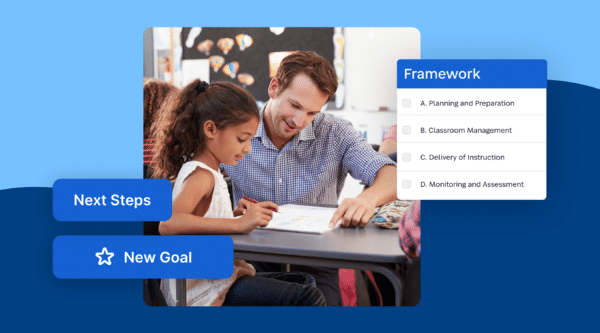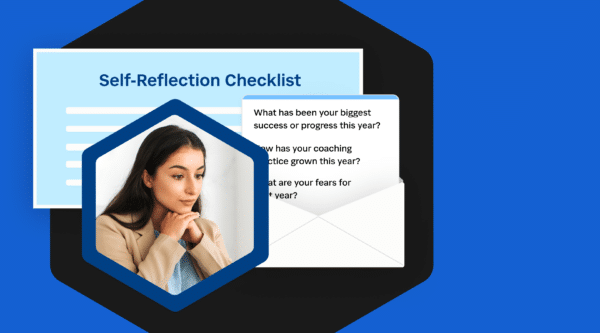

For more than 12 years, our team has collaborated with coaches and district leaders. We’ve observed the beneficial effects of a well-executed coaching program on teachers, students, and schools. The most successful programs are those where leaders intentionally craft and design them, keeping teacher support and student outcomes at the forefront.
Elena Aguilar, an expert in the coaching field, explains, “Coaching can be a key lever for transforming school culture, for providing teachers with the support and nurturing they deserve, for retaining effective teachers, and for creating equitable schools where every child thrives.”
After the massive disruptions in schools over the past few years, it’s starkly evident to me that coaching has become an even more vital support for teachers as it helps them adapt to unprecedented challenges and maintain satisfaction in their work. Here I share the key elements of successful coaching programs that I’ve observed and heard about in the field. My hope is that this will give more leaders and coaches a roadmap for building and sustaining a coaching program this school year—supporting teachers so that they continue to stay in their jobs and their students reap the rewards.
The 8 Key Elements
1. Create a strong vision for the program
As a district, ensure that there are conversations about the ultimate goals of the program. What will look and feel different in a school that has a coach or coaches? What are the resources needed to invest in the program? What is the timeline for implementation? What mechanisms do you have in place to measure coaching work alongside this vision?
2. Get the right people in the roles
People are always at the core of any successful program. Ensuring that the right people are selected as coaches will be very important in creating credibility particularly with other teachers. When thinking about the selection process, districts should consider:
- What is the process for selection?
- Who is involved when?
- What is the district role vs. the school role in selecting the coach?
- What training will the coach need when they do take on the role?
- How do you ensure your coaching program selection process ensures representation from diverse backgrounds and perspectives?
3. Be clear about the systems and structures for implementation
In order for a coach and a coaching program to be successful, the expectations for the coach have to be clear: Who are they coaching? How often are they coaching? Who is setting the coaching schedule? How long are the coaching visits? What is the process to debrief the visits?
4. Foster a positive, reflective learning environment that keeps equity at the forefront
At its core, coaching is about equity—it improves teaching practice which, in turn, improves student outcomes. When building a coaching program, equity should be at the forefront in terms of the initiatives that are chosen, the application process, and outreach to potential candidates, to name a few.
5. Communicate frequently with all stakeholders
To ensure all stakeholders are clear on expectations and implementation timelines, frequent communication is key. This could take the form of weekly emails, an online coaching and communication platform, or regular newsletters. Communications are also a great place to highlight best practices and spotlight coaches doing the work.
6. Ensure the coaches have the time and space for their own development
First and foremost, a coaching program’s goal is to improve teacher practice and/or disseminate key information across a system. However, there is also a huge benefit for the coaches: they are learning how to lead, which can open pathways to school leadership or other district roles. To maximize the benefit for the coaches, ensure there is time for them to meet and gather as a team and that there is investment in their own professional growth and development as a coach.
7. Measure the right things to do things right
To ensure a coaching program is producing the intended results, districts need to constantly collect and evaluate data. In a 2022 SchoolStatus Boost survey of education leaders from districts around the country, only 21% of respondents say they always use data to drive coaching decisions, and 57% say they often use data but would like to have more.
8. Fix what is not working quickly (no time to wait)
Once you collect timely and relevant data on a coaching program, make changes that will ensure the program is more likely to achieve the intended results—this may mean more time for observations or feedback, more focus on specific district priorities, better/clear communication, or better alignment of how coaches are prioritizing their time.
Research Supporting the Impact of Coaching
I know that it’s important to have research-backed evidence to support any investment or changes in your coaching program, so I’ve pulled together some studies that can help:
- Our team at SchoolStatus Boost found in a recent national survey of educators that most districts (75%) see the connection between coaching, teacher growth, and student achievement. And there was strong agreement (93%) that districts—where coaching is highly valued—create an environment that allows teachers to apply their learning more deeply, frequently, and consistently. To learn more, download the 2022 Coaching Impact Report
- In the article The Evolution of Peer Coaching, Joyce and Showers (2002) found that when traditional professional development introduces a skill in isolation, only 10% transfer it to improvement in their practice, as opposed to 95% of teachers who transfer the skill when they are coached through the phases of implementation
- Coaching is widespread and a growing lever upon which policy initiatives rely. The 2015 reauthorization of the Elementary and Secondary Education Act, now titled Every Student Succeeds Act (ESSR), includes at least 11 specific admonitions for state and local agencies to implement and support instructional coaching (Desimone and Pak, 2017)
The bottom line is that coaching, when done right, works. Coaching supports teachers, students, districts, and creates growth opportunities for coaches, and like all program implementation, the devil is in the details. In order to make a coaching program maximize its potential, the building blocks matter.
Reach out to us if you’d like to talk about how you can make your district’s coaching program more impactful this school year!ar!
Stay Connected
News, articles, and tips for meeting your district’s goals—delivered to your inbox.





